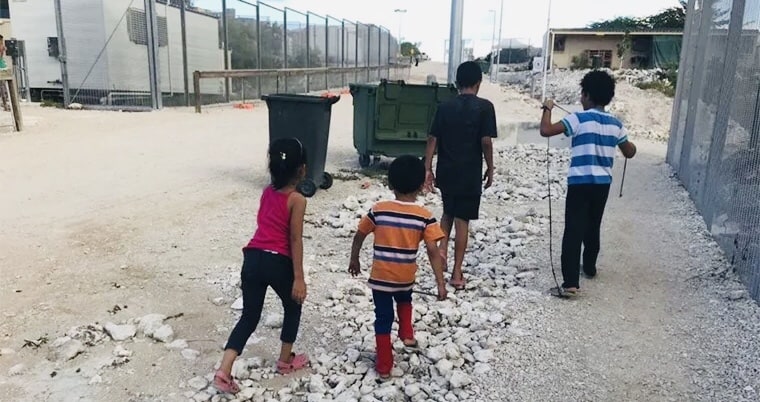Offshore processing on Nauru will cost Australia $485m (US$320 million) this year, despite the fact there are just 22 refugees and asylum seekers left at the Pacific Island’s regional processing centre.
Department of Home Affairs officials revealed the new figures at a Senate estimates hearing on Monday evening, but disputed suggestions from the Greens this amounted to a cost of $22m (US$14 million) a person.
Officials expect that in the next year no refugees and asylum seekers will remain on Nauru, but maintaining facilities for offshore processing will continue to cost at least $350m (US$231 million) a year as a “contingency” to send people in the event of future boat arrivals.
The department’s secretary, Michael Pezzullo, said it was both government policy and its direction to the department to “reduce the population to zero, and transition the facility to an enduring contingency”.
Under questioning by Greens senator Nick McKim, the department’s associate secretary, Stephanie Foster, disputed the $22m (US$14 million) figure, saying that “the costs for maintaining the facility are not attributable to the number of individuals – there’s a base level of cost required to maintain that capability”.
Costs would decrease from $485m in the 2022-23 financial year, but would reflect a “higher level of readiness for a short period in the coming financial year”, Foster said.
In 2025-26 and 2026-27, maintaining offshore processing is projected to cost $350m(US$231) a year, despite the expectation no refugees and asylum seekers will be kept on Nauru.
McKim told Guardian Australia “spending over $20m (US$13 million) per year on each and every person in offshore detention reveals Labor’s warped priorities”.
“The human cost of what is happening to innocent people on Nauru would be unacceptable even if it were costing us nothing financially,” he said.
“Labor has the opportunity to right the historical wrong that it started by bringing every person still stuck in Papua New Guinea and Nauru here to Australia, where they can start to rebuild their lives.”
In May 2016, Australia held 1,193 people on Nauru at an estimated per person cost of $534,000 (US$352) a year. Numbers of refugees and asylum seekers have steadily decreased, down to 107 in August 2021, due to resettlement.
On Tuesday evening the agriculture minister, Murray Watt, representing the home affairs minister, said Labor “would’ve preferred that the legacy caseload have been dealt with well before now, but it wasn’t”.
Watt said the “the efforts of government” to resolve the cases of people on Nauru could be demonstrated by the reduction of number. “It’s taken significant work.”
Officials revealed that in Australia and Nauru there were still 1,174 so-called “transitory persons” who arrived after the September 2013 deadline after which nobody who came by boat was allowed to permanently settle in Australia.
Australia has a three-year deal with New Zealand that will allow up to 450 people to resettle there, and is investigating a similar deal with Canada.
On Tuesday Australian Border Force officials revealed that eight boats holding more than 200 asylum seekers have been turned back under Operation Sovereign Borders in the past year. The OSB commander, Rear Admiral Justin Jones, said all eight of the boats had been “successfully resolved … returned to their place of origin safely and in accordance with Australia’s domestic and international legal obligations.
